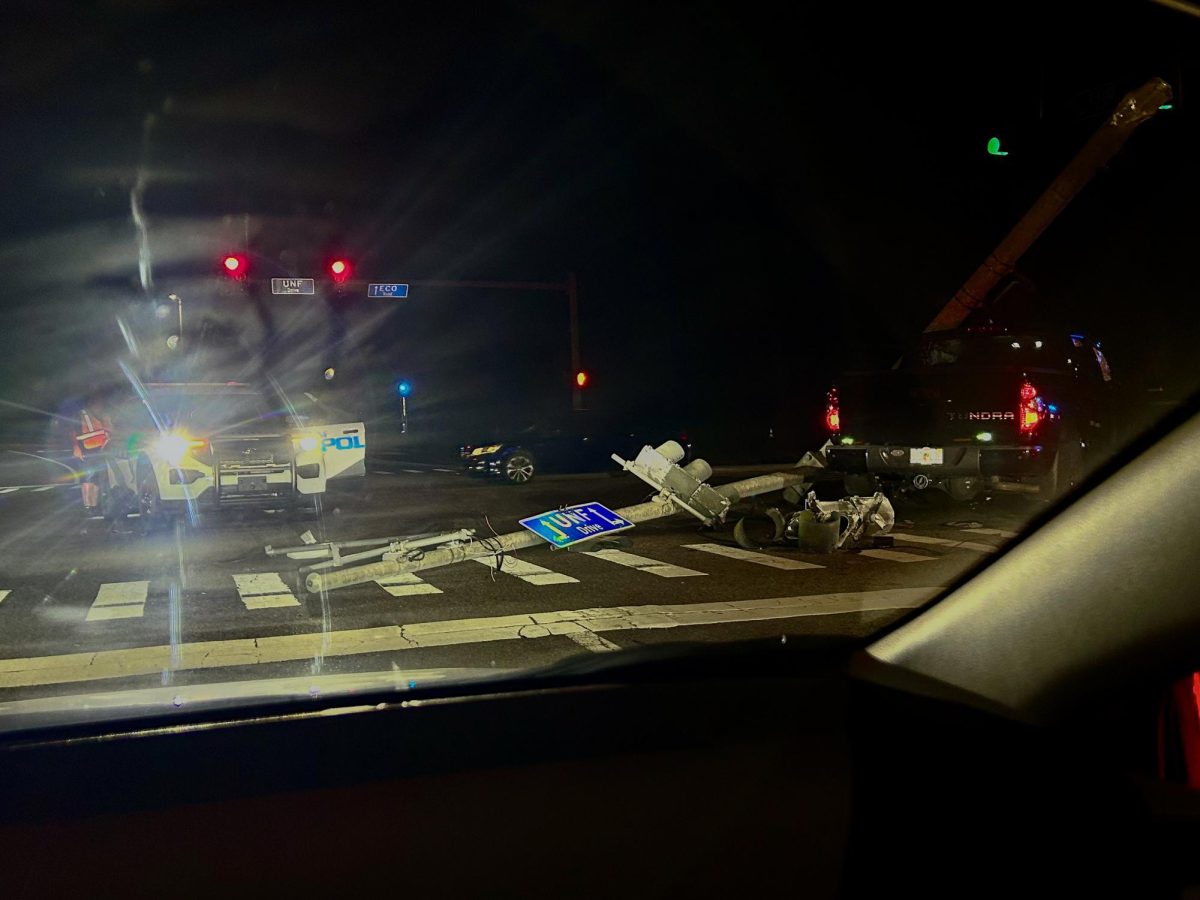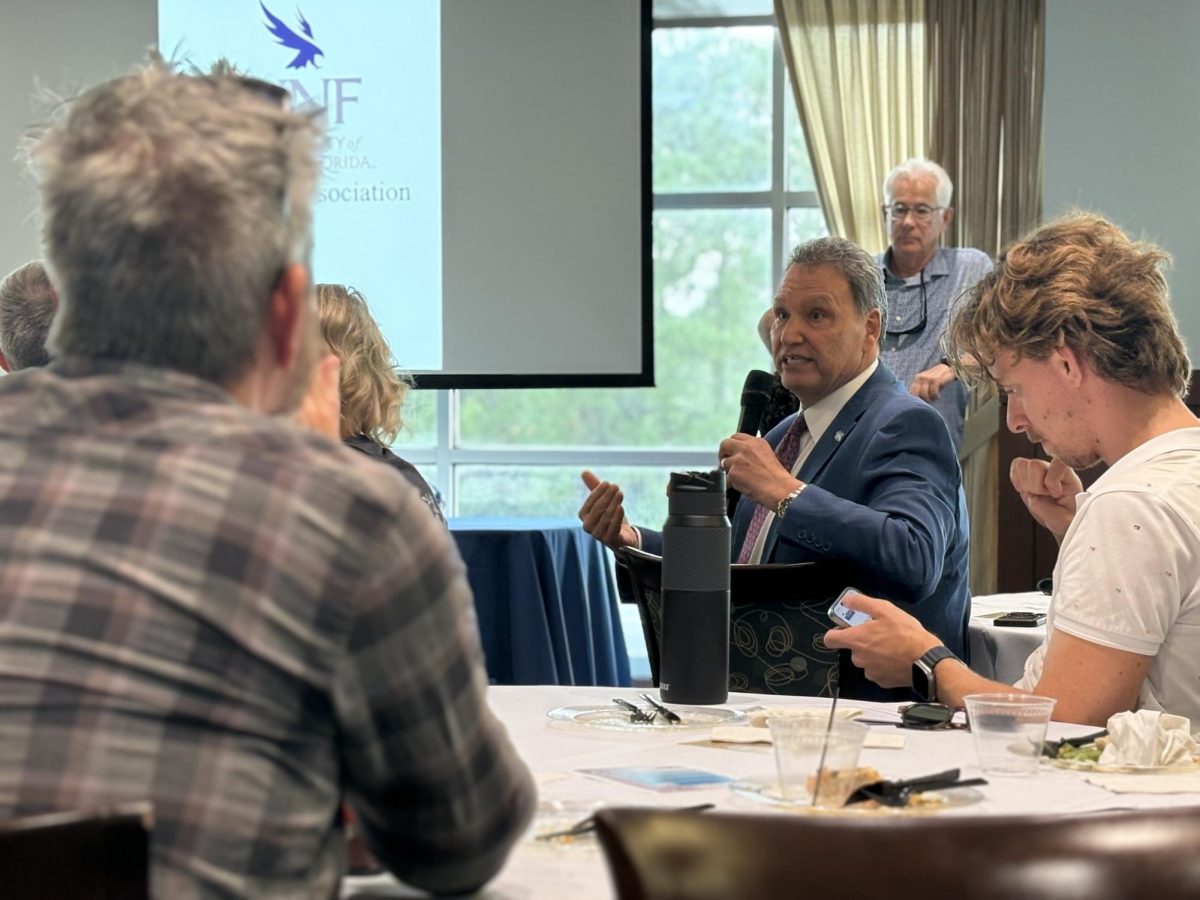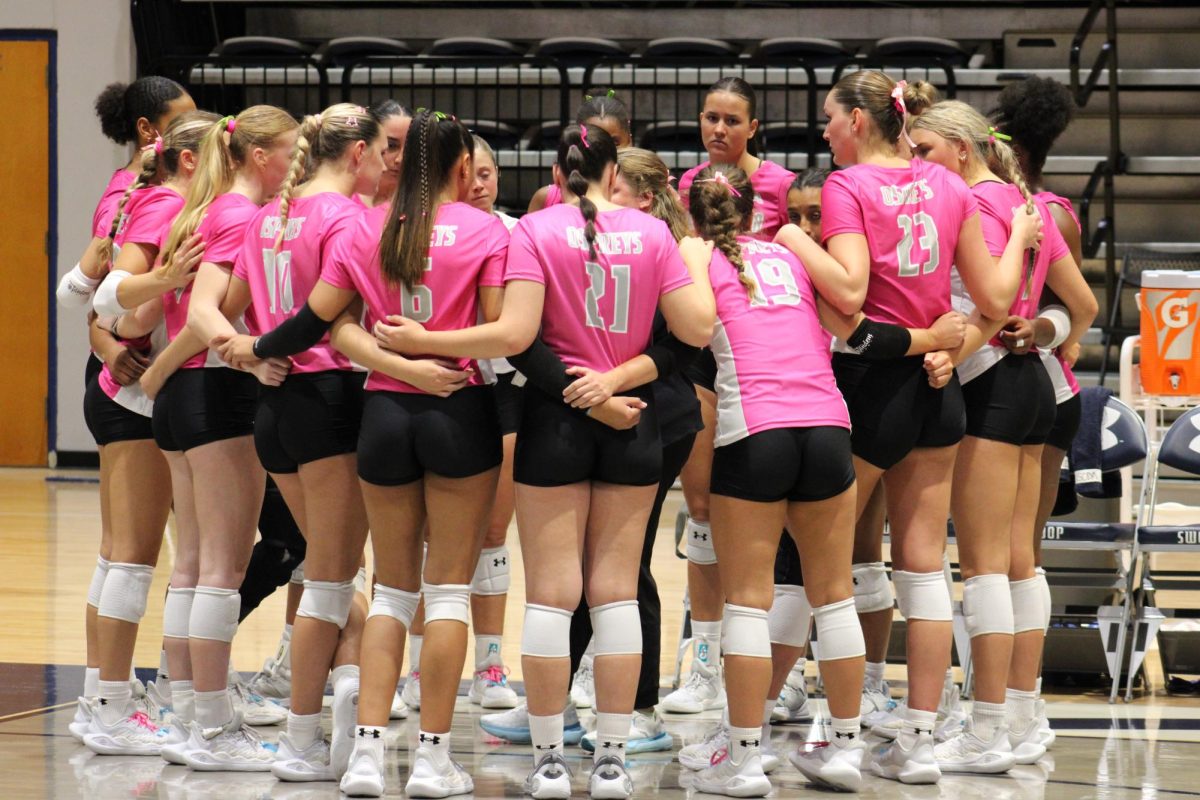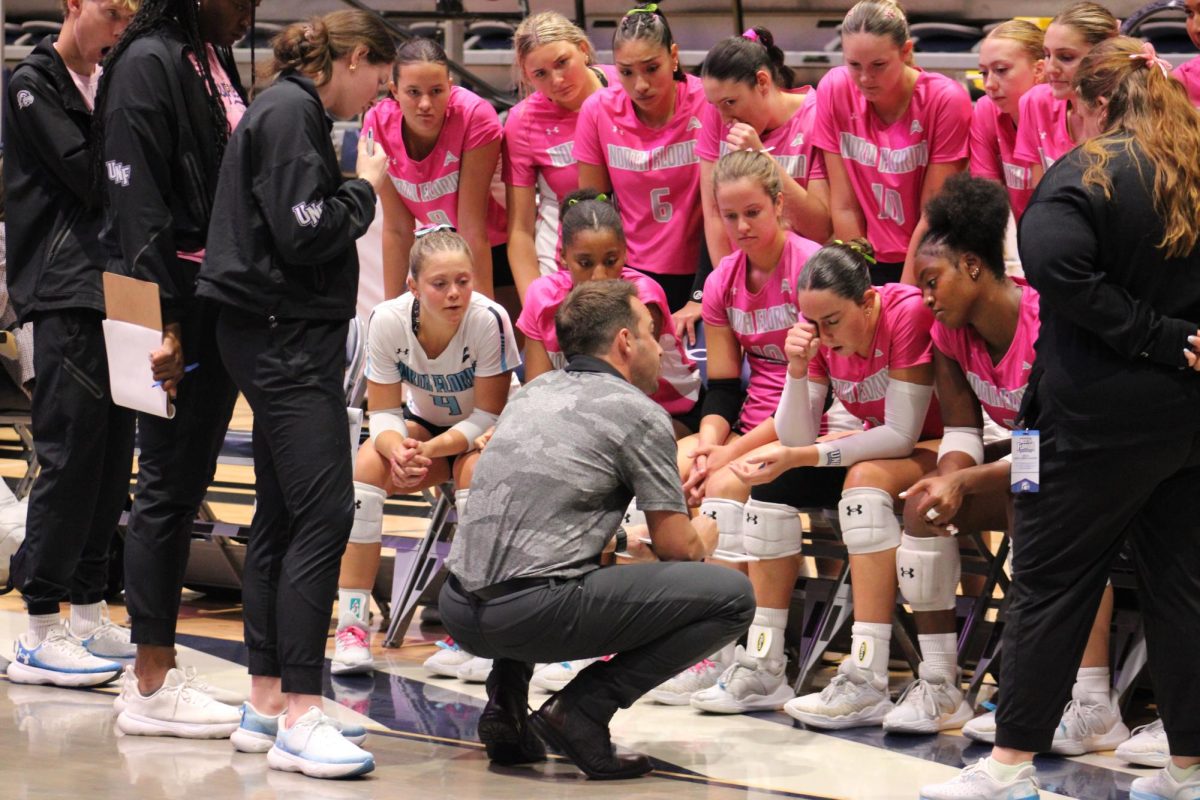By Maggie Seppi
Former and current guild members from the Museum of Contemporary Art Jacksonville are dissatisfied with the direction the museum, which operates in conjunction with UNF, took after it acquired a new director in February.
With the new director, Marcelle Polednik, came changes to the museum’s operations, including its newsletter and the responsibilities of the museum staff but not without causing disgruntlement among some of its longest-lasting members.
MOCA, located in downtown Jacksonville, offers courses in museum studies to UNF students. The university allotted $500,000 to MOCA in 2009 to assist the museum in becoming self-sufficient again.
Henry Cordes, a UNF Osprey Television volunteer and former a member of the MOCA guild, was responsible for creating and printing the museum’s newsletter. His responsibilities, as well as the featured exhibits, changed after Polednik took the position. This facilitated his uncertainty about the role of the guild, the museum’s new direction and, ultimately, his decision to leave the guild.
Traditionally, the guild is the volunteer base of the museum, aimed at supporting and pursuing its goals.
For instance, the guild used to create various fundraising activities to raise money for the museum, Cordes said, but now a lot of those have been eliminated.
“Before I left, we were planning a trip to Washington with a lady from the museum that could show us around, but the director basically told us, ‘She isn’t going, and you aren’t going,’” Cordes said. “To my understanding, we don’t really have any avenue today to do any fundraising.”
The guild has always functioned independently, while still supporting the museum’s goals, said Judy Cordes, a member of the guild for more than 20 years.
Now there are more people to go through to accomplish things; there’s more bureacracy, she said.
Polednik, however, said this is a way of promoting efficiency among the staff members, inside and outside of the guild, and making way for contemporary art.
After meeting the guild members soon after Polednik’s arrival, they said that they felt a bit lost in terms of their mission, Polednik said.
“One of the things I’ve been very anxious to do, because the guild expressed that anxiety, is to find a way in which we can work together,” Polednik said.
The leadership of the guild, as well as the contemporaries, is now represented on the board of trustees, Polednik said, so they are part of the inner circle. Thus, they have an obligation to ensure that they remain relevant and vital to the institution.
“So rather than there being changes at the guild level, the changes occurred across the board, institutionally,” Polednik said. “And because the guild is a vital part, the changes affected them as much as they did the staff, the board and every visitor that comes through that door, who now has a different experience than they would have a year ago.”
Janet Anderson, president of the MOCA guild as of May, shares a similar notion.
“Cordes did a wonderful job for a number of years. He’s a very talented guy and he gave up a lot of time and was very generous. But once the decision was made to bring it inside and make the changes, I’ve been very pleased with it,” Anderson said.
The exhibits MOCA has featured and continues to feature under Polednik are also more controversial than the museum has seen in the past.
For instance, Melanie Pullen’s High Fashion Crime Scenes collection, which was on display until Nov. 6 depicted a woman hanging from the ceiling wearing Prada attire.
Any time the museum displays material or works of art that may be challenging to view, it tries to get out in front of that message and communicate to the museum’s visitors what they will see when they arrive here, said Carl Holman, MOCA’s manager of communications and UNF’s assistant director of marketing and communications.
“There’s a lot of sensitivities involved in Melanie’s work,” Holman said, “so we had her come to the museum and she gave a two-hour public talk. She explained her artistic vent and her rationale for why she did the work.”
Pullen explained that by making things very cinematic, it provides for somewhat of a critique of the LA violence culture, Holman said. In this way, she is able to get the audience to reengage in their own sensitivities about violence.
Certainly not everybody will love every exhibit, Anderson said. Change causes angst occasionally, but that’s a good thing because it makes people grow, she said.
“I’ve had several older members come up to me individually at meetings and say, “We really support what is happening here,’” Anderson said.
















